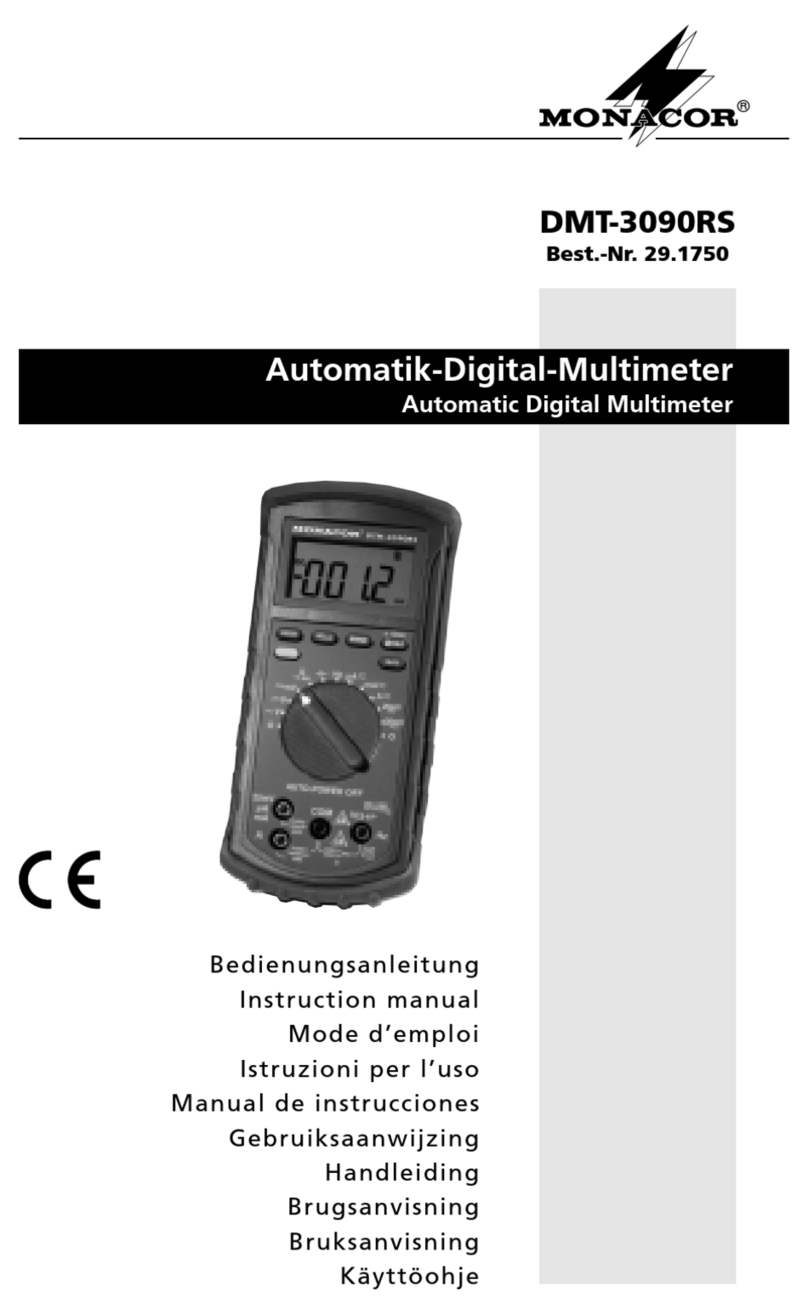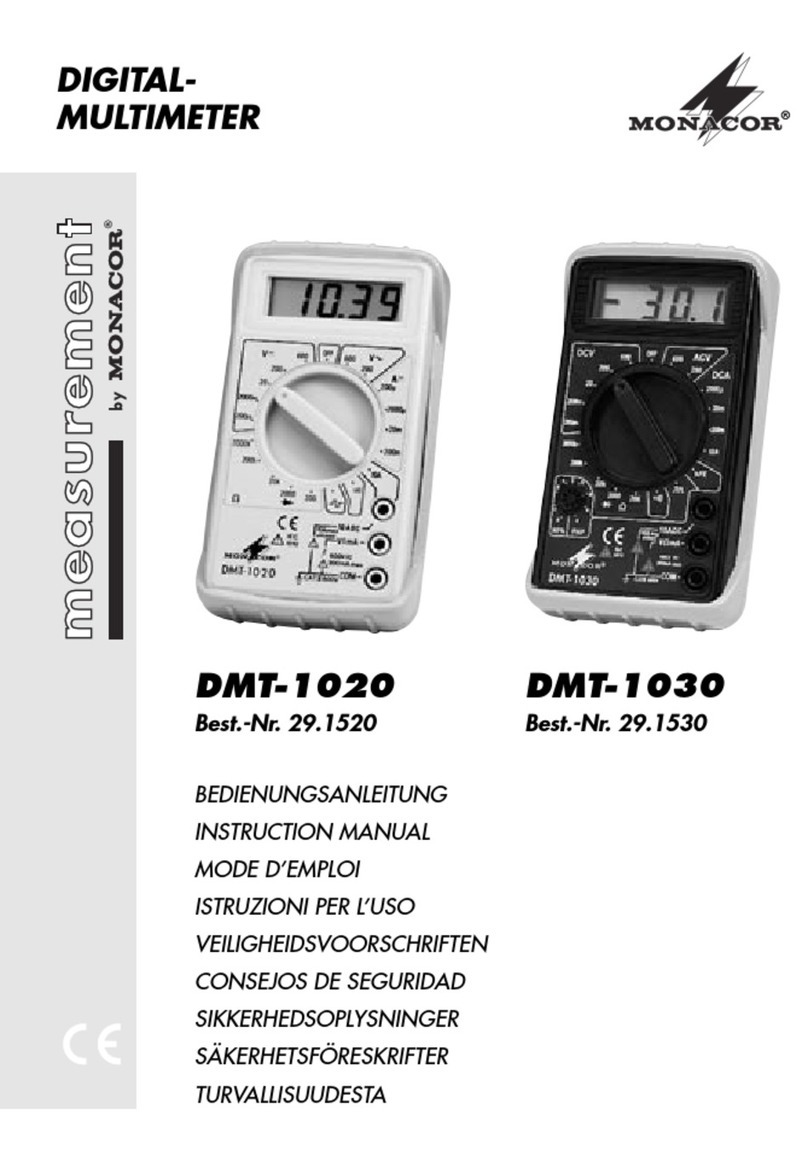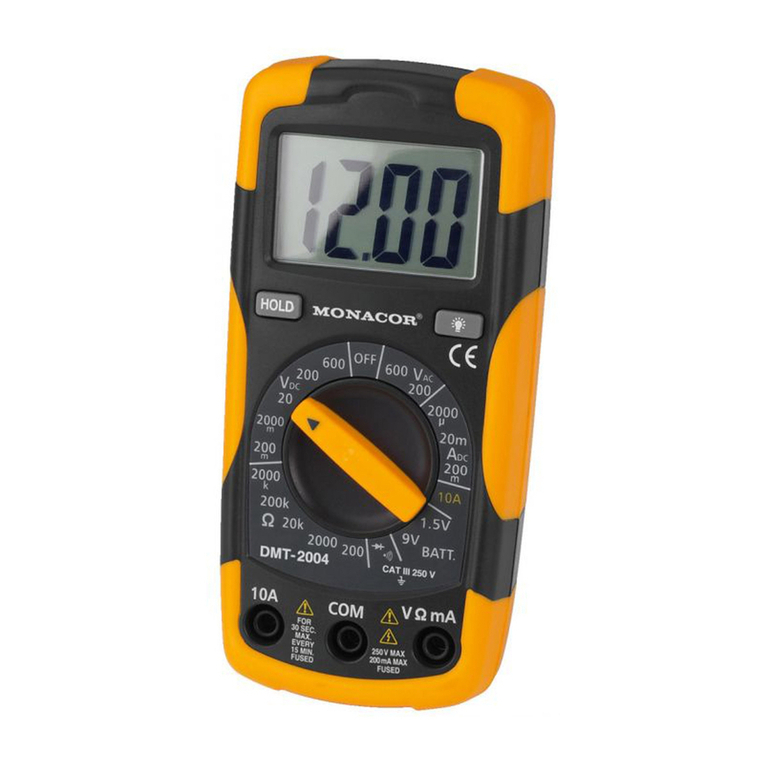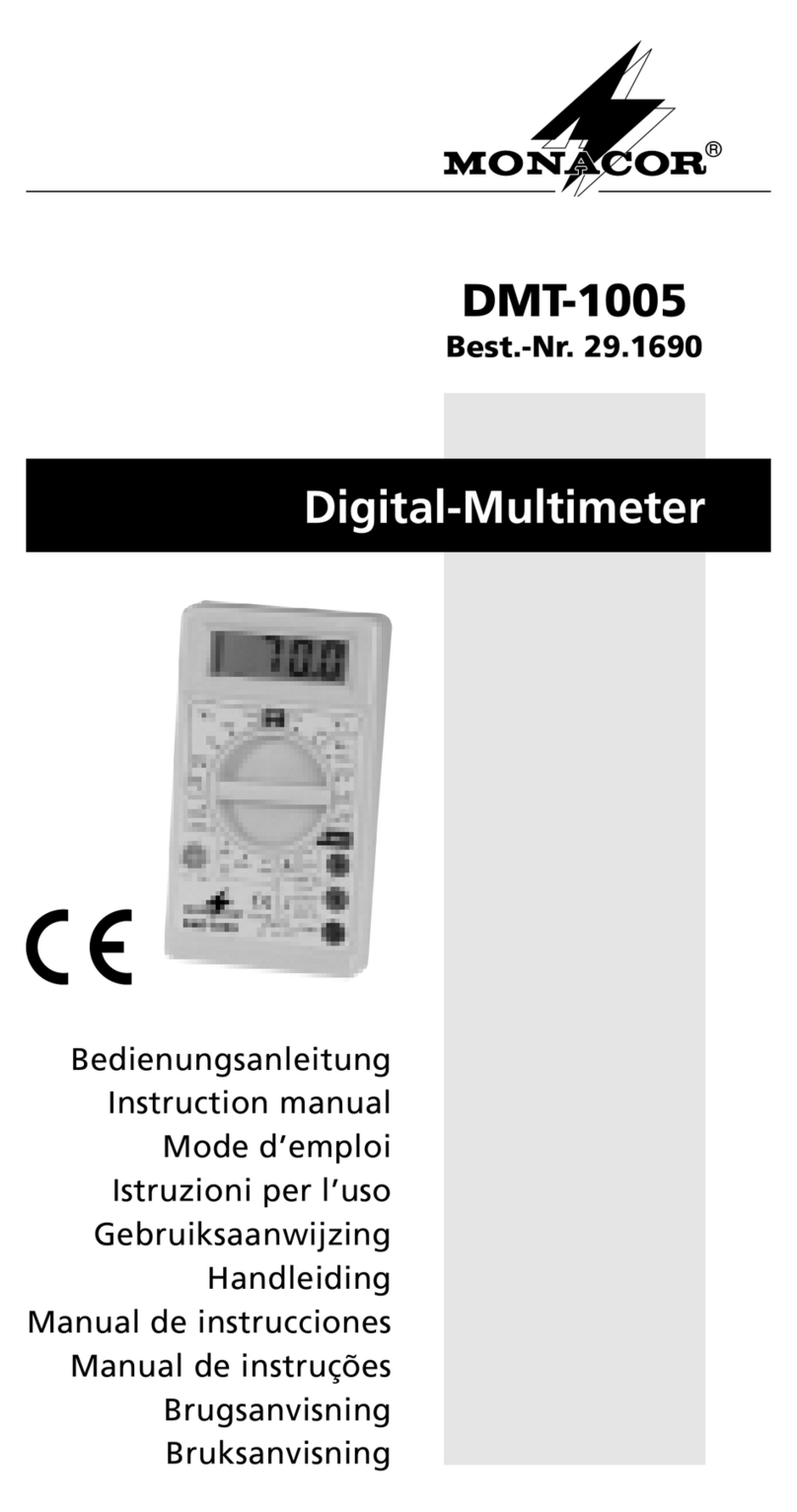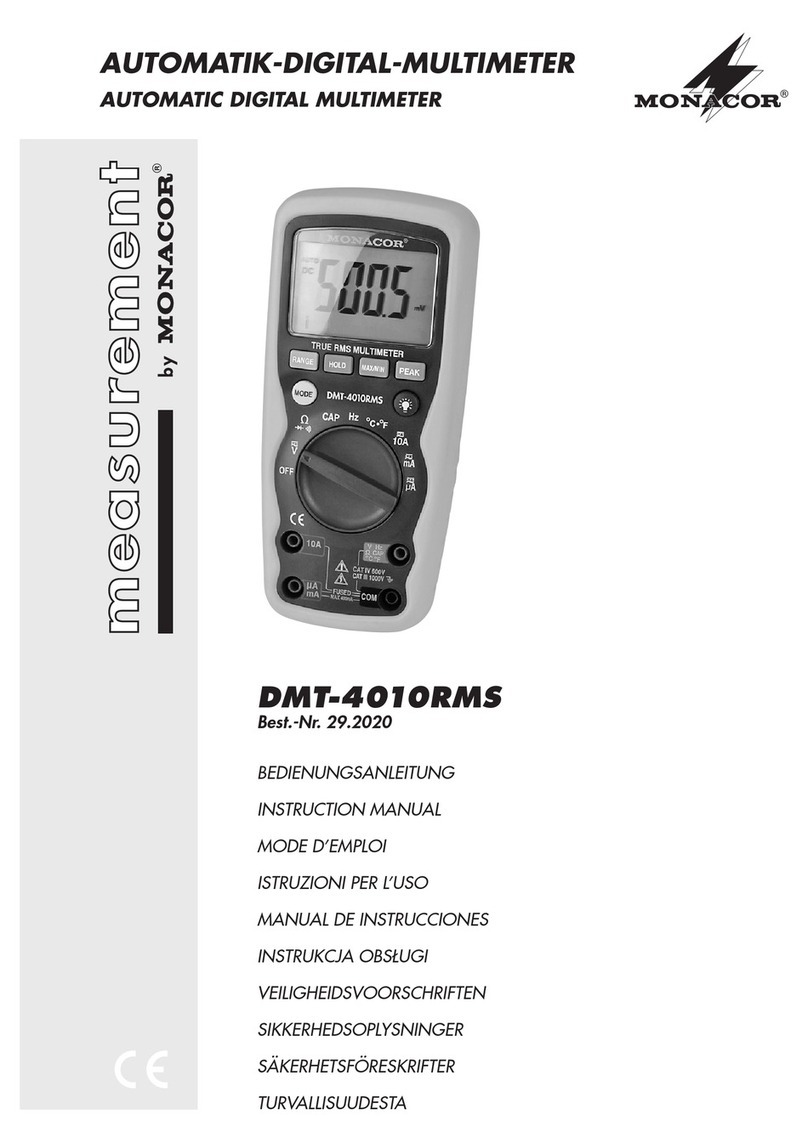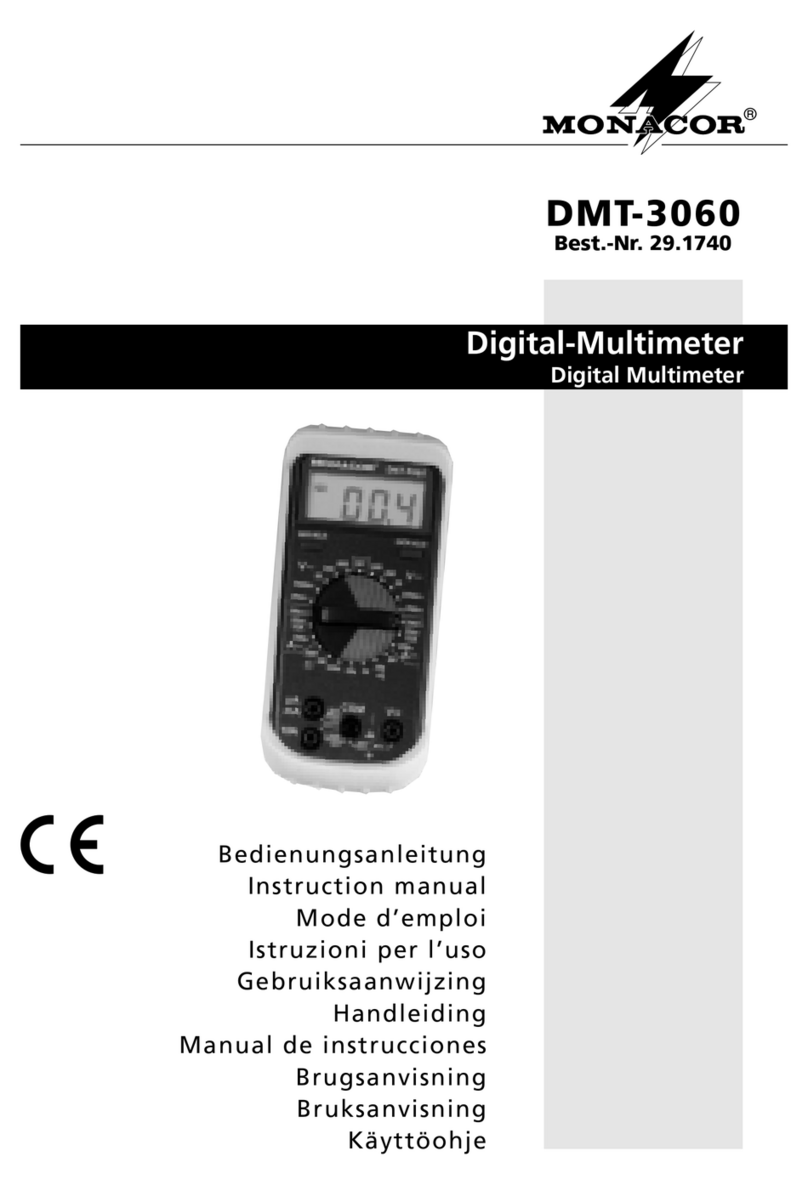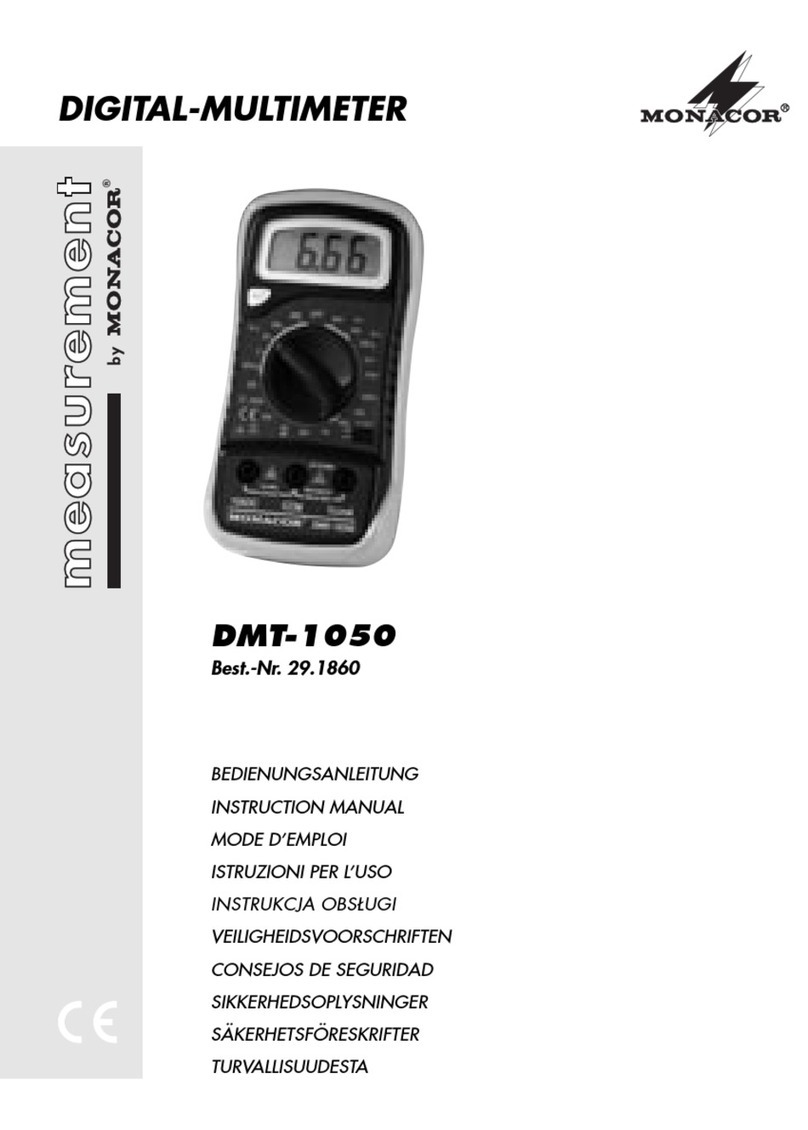Zum Zurückschalten auf Wechselspan-
nungsmessung die Taste Hz% ein- oder
zweimal drücken, sodass im Display wieder
„AC“ und „V“ angezeigt wird.
5.2 Strommessung
Der zu messende Strom darf 10 A nicht
überschreiten!
Ströme zwischen 1 A und 10 A dürfen nicht
länger als 30 Sekunden gemessen werden.
Anderenfalls können das Instrument und die
Messleitungen beschädigt werden.
1) Für Messungen bis 400 mA die rote Mess-
leitung an die Buchse µA/mA (5) anschlie-
ßen und für Messungen von 400 mA bis
10 A an die Buchse 10A (4). Bei unbekann-
ten Strömen die Messung vorsichtshalber
mit dem 10-A-Bereich beginnen.
Vorsicht! Auf keinen Fall eine Spannungs-
messung vornehmen, wenn die Messleitung
in der Buchse µA/mA oder 10A steckt. Das
Messgerät und die Spannungsquelle kön-
nen beschädigt werden.
2) Den Drehschalter (10) je nach zu messen-
den Strom in die folgende Position stellen:
3) Nach dem Einschalten ist immer die Gleich-
strommessung aktiviert: Das Display (6)
zeigt oben links „DC“ an. Für Wechsel-
strommessungen mit der Taste MODE (3)
auf die Anzeige „AC“ umschalten. Mit der
Taste MODE lässt sich auch wieder auf die
Gleichstrommessung zurückschalten.
4) Das Messgerät über die Messleitungen in
den zu messenden Stromkreis einschleifen
und den Messwert im Display ablesen. Liegt
bei Gleichstrommessungen an der roten
Messspitze der Minuspol und an der schwar-
zen Spitze der Pluspol, erscheint im Display
vor dem Messwert ein Minuszeichen.
Übersteigt in einem Messbereich der
Messstrom den zulässigen Wert, ertönen
Warnsignale und im Display erscheint „OL.“
(overload = Überlast). Der nächsthöhere Be-
reich muss gewählt werden.
5) Während einer Wechselstrommessung
kann mit der Taste Hz% (2) auf die Messung
der Frequenz und des Tastverhältnisses
umgeschaltet werden. Jedoch ist die Ein-
gangsempfindlichkeit nicht so hoch und der
Frequenzbereich nicht so groß wie bei einer
Messung in der Drehschalterposition Hz%:
Zum Zurückschalten auf Wechselstrom-
messung die Taste Hz% ein- oder zweimal
drücken, sodass im Display wieder „AC“
und „A“, „mA“ oder „µA“ angezeigt wird.
5.3 Widerstandsmessung
Einen Widerstand auf keinen Fall bei anlie-
gender Spannung und immer separat mes-
sen, sonst ist die Messung falsch. Dazu
muss er ggf. aus der Schaltung herausgelö-
tet werden.
Den Drehschalter (10) in die Position Ωstellen
und die Messspitzen an den Widerstand hal-
ten. Den Widerstandswert auf dem Display ab-
lesen. Solange sich kein Widerstand zwischen
den Messspitzen befindet oder die Messspit-
zen nicht kurzgeschlossen sind, zeigt das Dis-
play mit „OL.“ einen unendlich hohen Wert an.
5.4 Durchgangssummer
Der Durchgangssummer dient zum Feststellen
von Leitungsunterbrechungen.
Eine Durchgangsprüfung nie bei anliegen-
der Spannung durchführen. Das Instrument
kann beschädigt werden und die Messung
ist falsch.
1) Den Drehschalter (10) in die Position
stellen. Oben im Display erscheint das Sym-
bol für die Diodenprüfung.
2) Mit der Taste MODE (3) auf die Durch-
gangsprüfung umschalten. Oben im Display
erscheint das Summersymbol .
3) Die Prüfspitzen an die entsprechenden
Messpunkte halten. Ist der Widerstand zwi-
schen den Punkte kleiner als 40 Ω, ertönt
der Durchgangssummer. Der Widerstands-
wert wird bis 400 Ω im Display angezeigt.
Bei höheren Werten erscheint die Überlauf-
anzeige „OL.“
Messstrom Position
< 4000 µAµA
4 – 400 mA mA
400 mA – 10 A 10A
Messbereich Empfindlichkeit Frequenzbereich
400 mA~ ≥ 45 mA 5Hz–5kHz
10 A~ ≥ 4 A 5Hz–1kHz
D
A
CH
7
